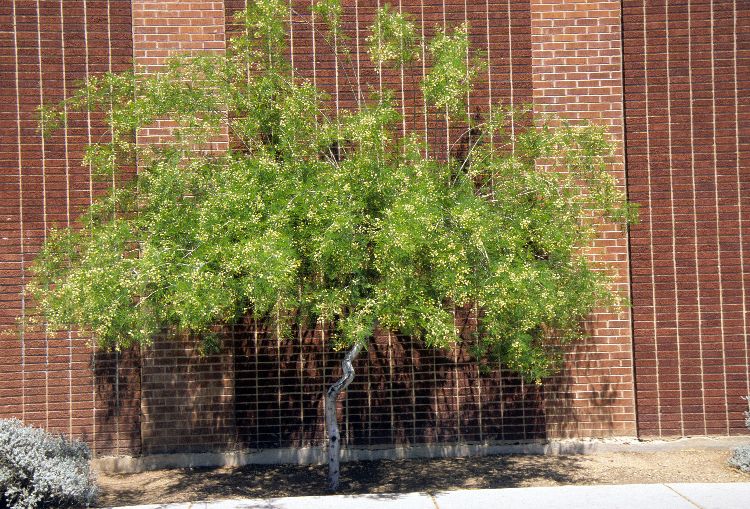
Acacia berlandieri
Guajillo
Prune young plants carefully if your goal is to develop a small tree form. Leaves are delicate and almost fernlike. Small thorns appear on some trees. Canopy coverage: 113 square feet.
[Read More]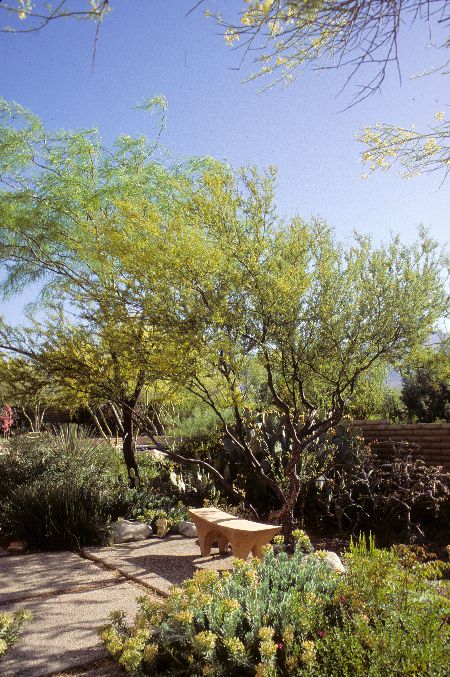
Acacia constricta
White Thorn Acacia
White Thorn Acacia can be grown as a tree or shrub—often with multiple trunks. Casual growth habit works well in naturalistic landscapes. Canopy coverage: 177 square feet.
[Read More]Acacia covenyi
Blue Bush
Use Blue Bush as a small tree or large screen. You'll like the distinctive, bluish gray foliage color and 3-inch, rounded leaves. Best with some protection from the sun in hot summer regions. Bright yellow flowers are fragrant and bloom early in the season. Avoid overwatering, especially in summer. Canopy coverage: 177 square feet.
[Read More]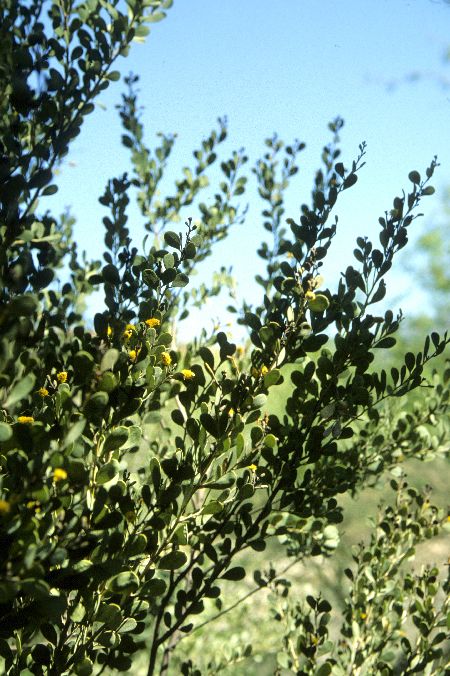
Acacia craspedocarpa
Leatherleaf Acacia
The shrubby tree form of Leatherleaf Acacia works well as a dense screen. Leaves are thick with a rounded shape. Bloom is sporadic from spring through summer. Canopy coverage: 50 square feet.
[Read More]Acacia cultriformis
Knife Acacia, Knife-leaf Wattle
A sprawling shrub that can be trained to become a small tree, Knife Acacia has distinctive triangular-shaped leaves. Yellow to cream, puffball flowers are profuse in early to midspring. Makes a good barrier or screen. Canopy coverage: 177 square feet.
[Read More]Acacia farnesiana
Sweet Acacia
The puffball flowers of Sweet Acacia are highly fragrant. Prune gradually to create a handsome small tree. Canopy coverage: 314 square feet.
[Read More]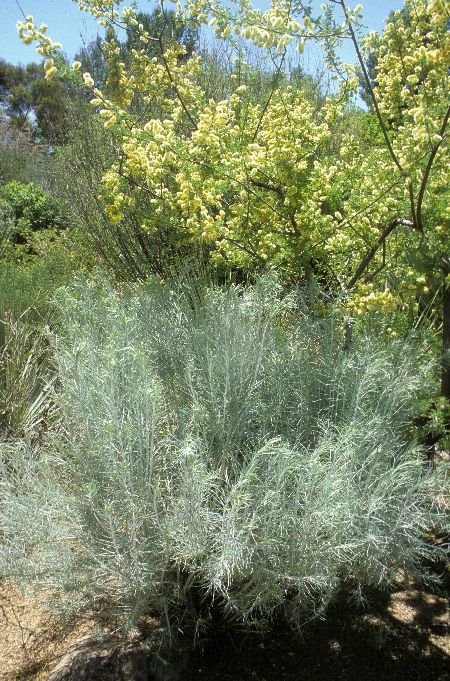
Acacia greggii
Cat-claw Acacia
Cat-claw Acacia is easy to maintain as a shrub form. Requires little water. However, additional irrigation increases growth, which allows pruning to create a small tree. Curved thorns are the reason behind its common name, making it an excellent barrier plant. Canopy coverage: 113 square feet.
[Read More]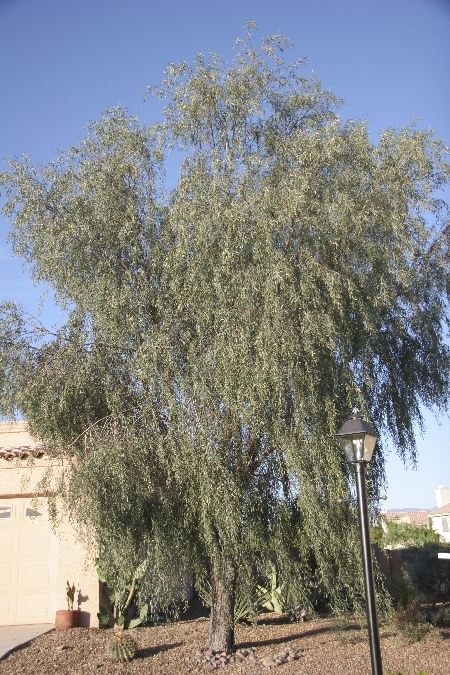
Acacia pendula
Weeping Acacia
Weeping Acacia becomes a tall, vertical tree with age. Its most striking feature is the weeping growth habit with silvery leaves. Flowering is uncommon in arid regions. Canopy coverage: 491 square feet.
[Read More]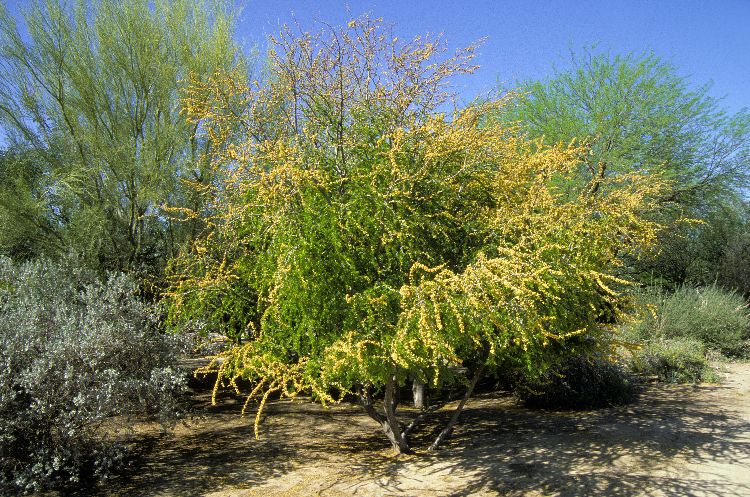
Acacia rigidula
Blackbrush Acacia
The shrublike form of Blackbrush Acacia creates an effective screen. Medium-size thorns present a security barrier. Distinctive dark green foliage contrasts nicely when combined with gray-leaved plants. Canopy coverage: 177 square feet.
[Read More]
Acacia salicina
Willow Acacia
The common name Willow Acacia is evocative of the weeping form of this tree. Its slender shape makes it a good choice as a casual screen. Canopy coverage: 314 square feet.
[Read More]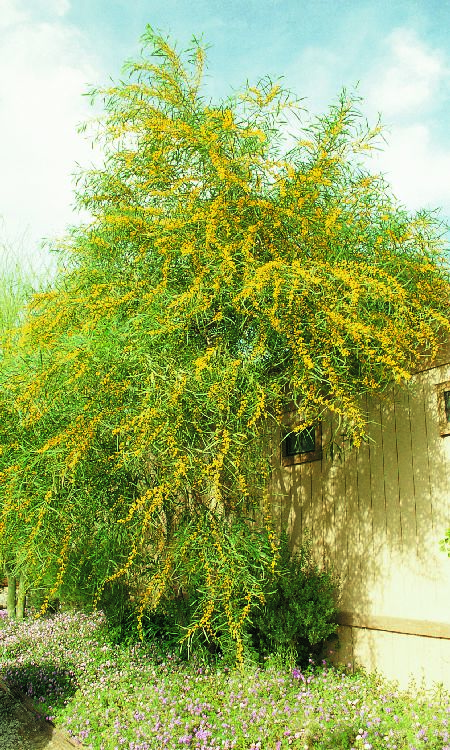
Acacia saligna
Blue Leaf Wattle
This tree is fast-growing, tending even toward aggressive growth. Branches and leaves drape gracefully toward the ground. Flowers are profuse yellow puffballs. Canopy coverage: 314 square feet.
[Read More]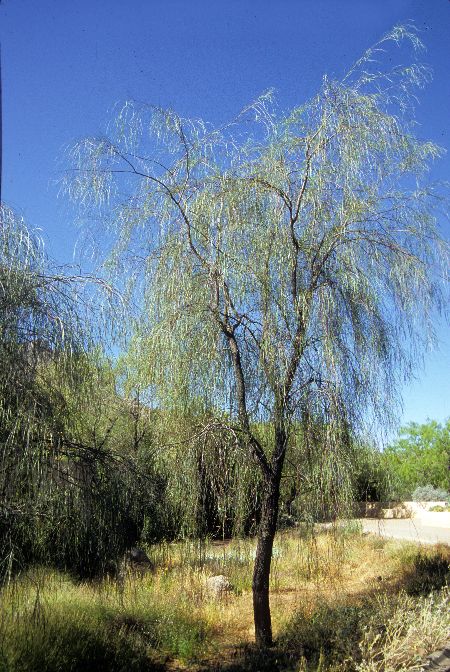
Acacia stenophylla
Shoestring Acacia
The upright and airy form of Shoestring Acacia is attractive when planted as a small grove. Makes an effective screen. Canopy coverage: 314 square feet.
[Read More]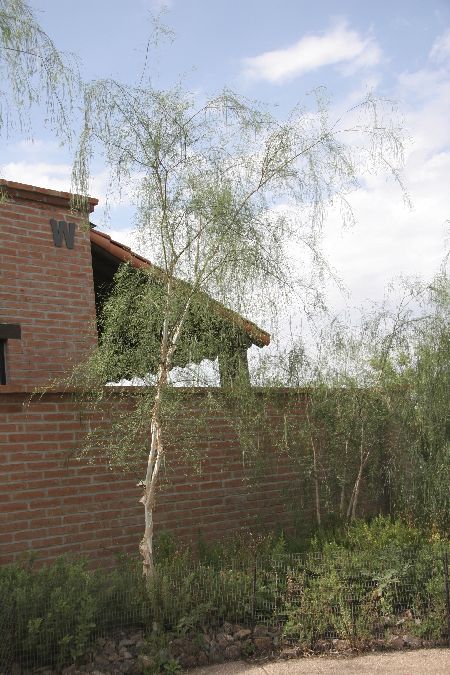
Acacia willardiana
Palo Blanco
The airy, vertical form of this tree makes it a prime accent in the landscape. It may be semievergreen, depending on how low temperatures drop in your region. White peeling bark similar to a Birch tree adds interest. Canopy coverage: 79 square feet.
[Read More]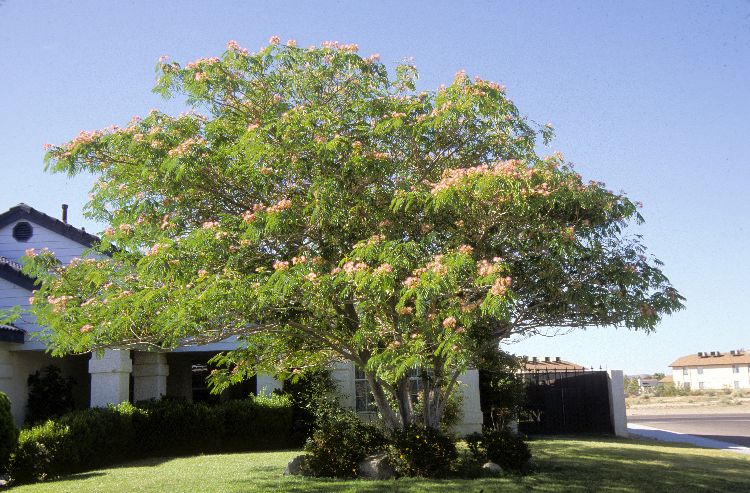
Albizia julibrissin
Silk Tree
Multiple trunk forms are common for Silk Tree. Flowers are dramatic, almost subtropical in nature. Flower litter can be messy. Canopy coverage: 1,257 square feet.
[Read More]
Bauhinia blakeana
Hong Kong Orchid Tree
This is a subtropical tree for mild-winter regions only. Partially deciduous during the fall and winter bloom period. The winter-bare branches allow the large, brightly colored, orchidlike flowers to show off that much more. Canopy coverage: 314 square feet.
[Read More]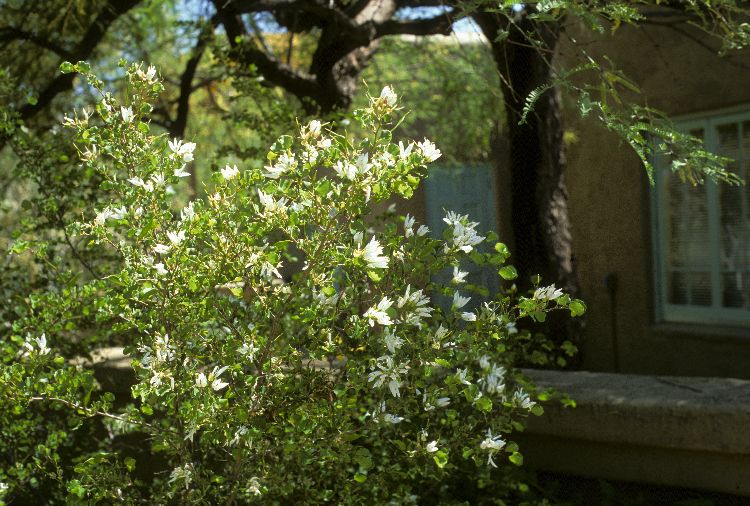
Bauhinia lunarioides
White Orchid Tree
This Bauhinia is more cold hardy than its cousins and is considered to be semievergreen. It is small in stature, which allows its use as a patio tree or flowering shrub tucked into a confined space. Canopy coverage: 28 square feet.
[Read More]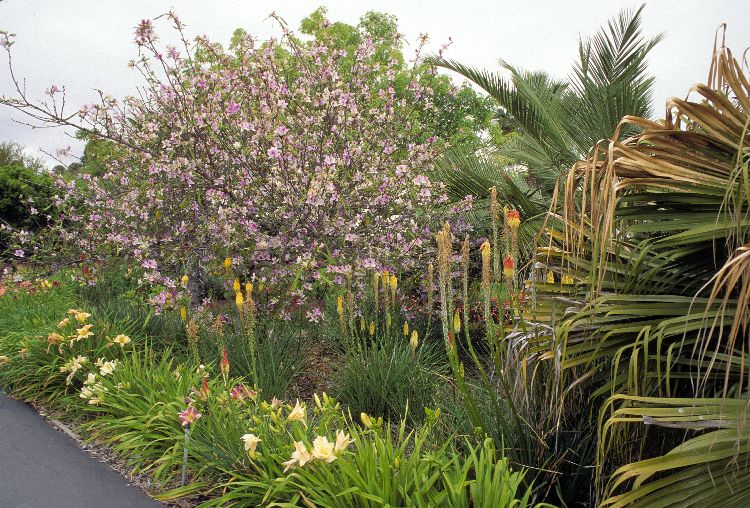
Bauhinia variegata
Purple Orchid Tree
This subtropical tree is partially deciduous, dropping leaves during the initial part of the bloom season. Orchidlike flowers are smaller than those of Hong Kong Orchid Tree, but showy and profuse. Long brown seed pods to 1 foot long follow flowers. Canopy coverage: 707 square feet.
[Read More]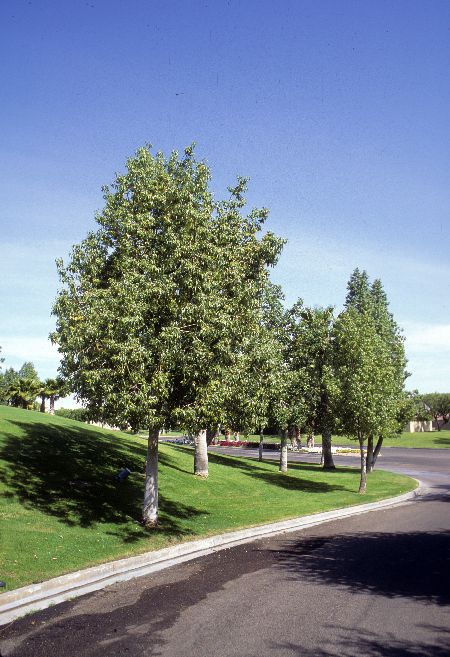
Brachychiton populneus
Bottle Tree
The common name Bottle Tree is due to shape of the trunks of mature trees—wide at bottom and tapering toward the top. Flowers are small and not all that noticeable. Canopy coverage: 314 square feet.
[Read More]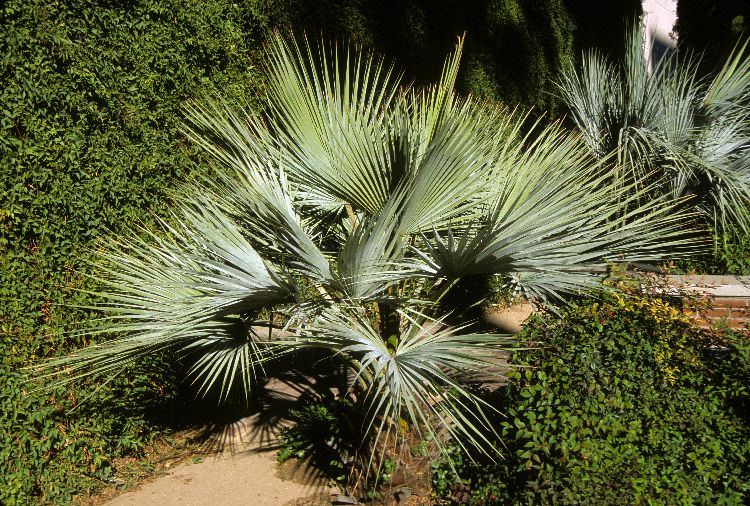
Brahea armata
Mexican Blue Palm
Mexican Blue Palm is a tropical, fan-type palm that is very slow growing. Canopy coverage: 79 square feet.
[Read More]Butia capitata
Pindo Palm
Pindo Palm is a feather-type palm, with fronds growing up to 10 feet in length that curve back toward its sturdy trunk. It is cold hardy and widely adapted to a range of climates, from coastal to desert. Best with some protection from the sun in hot summer regions. Canopy coverage: 177 square feet.
[Read More]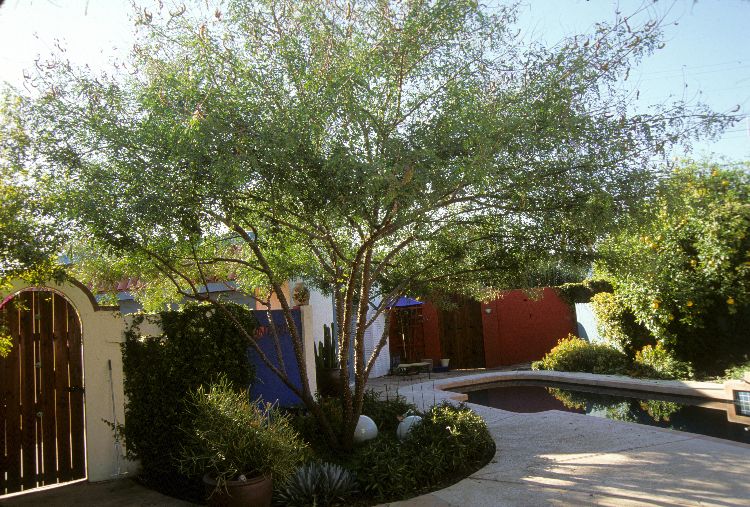
Caesalpinia cacalaco
Cascalote
Cascalote can be trained to become a small, vase-shaped tree. Spike-shaped flowers are profuse winter into spring. Interesting and colorful seed pods follow flowers. Canopy coverage: 177 square feet.
[Read More]